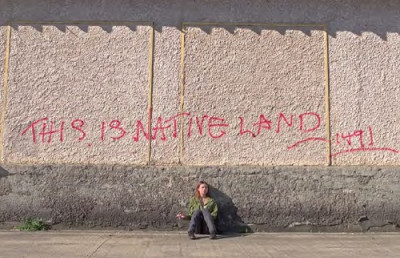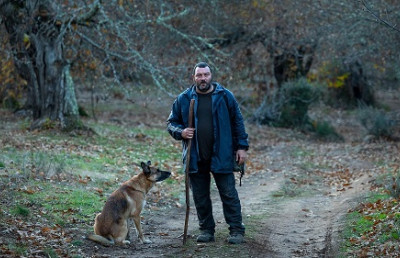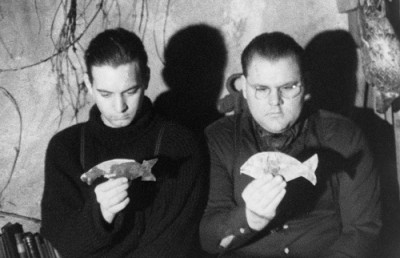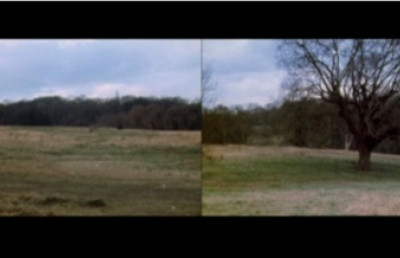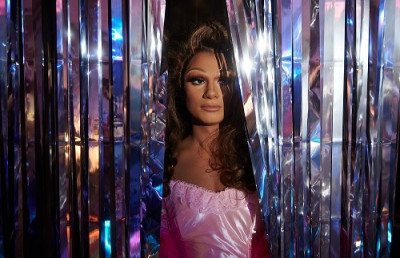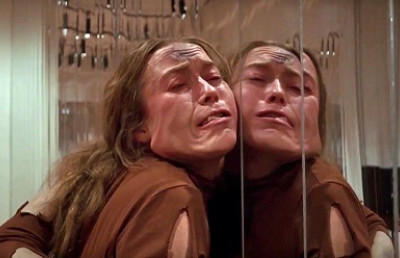Don’t Look Now (Nicolas Roeg, 1973): A Portrait of Venice in the Winter
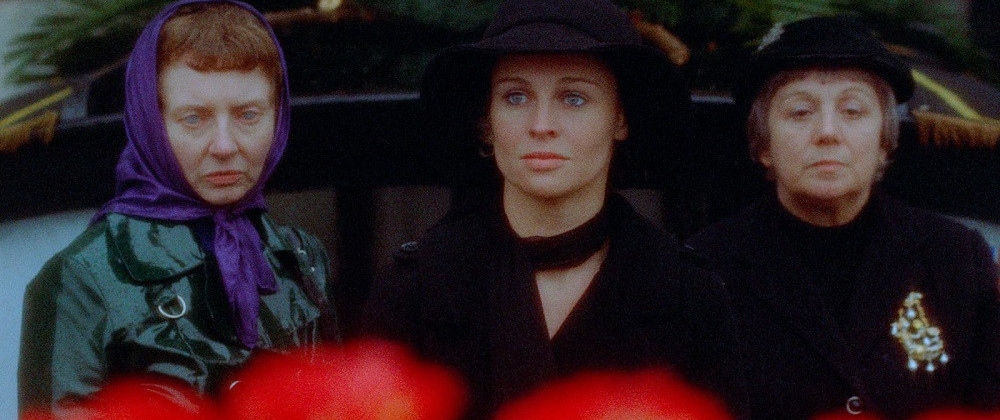
Don't Look Now (photo source, Criterion)
Venice would certainly rank high in any list of cinematically rich world cities. On par with London, Paris, New York, Tokyo, and other urban centers that can be superbly augmented beyond their physical reality through a filmic eye, the city intrinsically lends itself to a visual representation that amplifies the sequences set in its locales. Whether it be for a dramatic boat chase (Indiana Jones and the Last Crusade, Steven Spielberg, 1989), a heart-stopping climax (Casino Royale, Martin Campbell, 2006) or the spiraling discovery of a twisted sadomasochistic plot (The Comfort of Strangers, Paul Schrader, 1990), Venice remains staggeringly fertile in terms of scene construction within a film. In that regard, while the city’s summer season has only grown more crowded over the years despite local efforts to mitigate the consequences of mass tourism, its winter season still seems mostly unknown to outsiders.
If one were to venture into the city during the off-season, there’s a strong chance they would step into a maze-like urban construct of water, cloud, and mist, with a dazzling patchwork of reflections and shadows in the cool, damp air of the streets and canals. Such is the cinematic environment that Nicolas Roeg masterfully captures in his 1973 thriller Don’t Look Now, adapted from Daphne du Maurier’s short story of the same title, to provide a visual transposition to the narrative’s exploration of the pain and confusion associated with grief. Not only is the film a striking suspense story that showcases the best of Roeg’s impressionistic, elliptical style, it also captures the melancholy and murkiness of Venice in the wintertime and invites the audience to discover the city through a lens that challenges their usual conceptions as manifested in the warm, sunny months of the tourist season.
The entire stylistic potency of Don’t Look Now is encapsulated in its opening scene, which has lost none of its emotional shock to this day. In a dazzling editorial interplay of color and water, the horror that afflicts John and Laura Baxter – played by Donald Sutherland and Julie Christie – when their young daughter Christine accidentally drowns in a pond at their English country home accompanies them all the way to Venice. Having accepted a commission to restore a church, John tries to process his grief through his work, while Laura remains shattered by the death of their daughter and only starts to feel better upon meeting elderly sisters Heather and Wendy, the former being blind and apparently psychic. Claiming she can see Christine, Heather provides some comfort to Laura while John remains skeptical of the sisters. However, he soon begins to perceive glimpses of a small person in a red coat, similar to the coat Christine wore when she died, amidst rumors of a serial killer on the loose in Venice.
This supernatural element sets the groundwork for the sense of tension and misperception that permeates the film, which is strikingly magnified by the particular visage of Venice that the Baxters are encountering at that time of the year. As Andrew Patch argues in his essay “Beneath the Surface: Nicolas Roeg’s Don’t Look Now”: “In other words, Don’t Look Now is constructed around the juxtaposition of a vibrant red […] with a landscape and urbanity comprised of a more subdued palette of blues, greens, browns, grays, whites, blacks, etc. Venice, for example, through this aesthetic strategy, becomes monochromatic, a wintry liminal urbanity within which the transient eruption of red draws the spectator’s eye, teasing us to look” (Patch 259).
Patch’s argument indeed raises an intriguing point on the role of color throughout the film. Having been conditioned to associate the color red with Christine through the predominance of her coat in the film’s chilling opening, the audience’s awareness is triggered whenever they see a glimpse of red within the cold dimness of the Venetian winter, sharing John’s perception in real time as each tries to decode what it is that’s moving about in these surroundings. The city itself being a beautiful display of color and light in the summertime, with the magnificent bridges and buildings shining brightly and the reflections of the canals and lagoons sparkling under the warm sunlight, it can feel somewhat unsettling for the audience at first to step into this murky, cold, wet environment of washed-out colors. A peek of red amidst the seasonal bleakness of winter is a trigger for the audience to try and find some point of familiarity in both the narrative they’re seeing unfold on the screen and the city they’re trying to recognize, which puts them in a state of mind utterly similar to John’s as both parties advance through the story in their own way.
Mark Sanderson expands on the desolation of Venice in the winter in his interpretation of the film, as argued in the BFI Modern Classics volume on Don’t Look Now: “If coldness is macabre it can be melancholy too. There is something intrinsically depressing about a deserted tourist trap (from a film-maker’s point of view, though, the absence of rubbernecks makes life much easier). The fairground opposite John and Laura’s hotel is shut up. Inside the lobby the furniture is shrouded in dust-sheets. Everywhere is closing down, there is a pervasive sense of an ending. The crumbling stone of the palazzi and the dirty water of the gondola-free canals paint a dismal backdrop. Economically and emotionally, winter is a season of discontent” (Sanderson 27). Scott Salwolke, in his book Nicolas Roeg Film by Film, supports this vision of Venice as it transitions to the off-season: “The Venice that Roeg portrays is not the city one would find in a travel brochure. The holiday season is over, and the hotel John and Laura stay in is preparing to close; white sheets already cover the furniture. As the couple make their way to the restaurant, they seem totally alone because the streets are empty. An oppressive atmosphere adds to the tension of the story, so that the city itself becomes a character” (Salwolke 43). Both arguments at this point continue to describe the wintertime in Venice as a cold, uninviting season on first sight. That being said, such an apparently unappealing look for the city does feel intrinsically connected to the tourist perception of it, rather than how the local population would presumably inhabit it in their day-to-day lives throughout the hot and the cold months of the year.
Sanderson’s take on the wintry veneer of Venice does address the local population’s interactions with the Baxters as they go about the city: “In Don’t Look Now the Venetians always have their eye on John and Laura, watching them from the security of their own homes, from the windows of cafés and from their place of work. And they never, ever, say anything: the lavatory attendant in the restaurant, the person throwing dirty water into the canal, the man closing the shutters, all remain silent. It is as if they know something we do not and are keeping out of trouble, experts at turning the cold shoulder” (Sanderson 29-30). The argument proposed by Sanderson about the Venetians’ rough disassociation from the plight of John and Laura – foreign visitors who might, in a way, have overstayed their welcome as the city shifts to the chiefly local vibes of the winter season – is also connected to the ubiquity of water through the character of the city, which ties the cold, wet weather and the suspicious locals around the aqueous essence of Venice itself: “Venice is a city of bridges: constant reminders that the sea is inexorably reclaiming the land that was once reclaimed from it. Water, water is everywhere. It is a giver of life and a giver of death. […] A floating zone of fleeting impressions, it is the natural place to find the supernatural” (Sanderson 24).
The overwhelming presence of water in the film, from the English pond where Christine dies to the Venetian lagoons and canals where her parents try to process their grief, is coupled with a motif of glass that provides a texture of fragility and a sense of shifting perception from one moment to the next. John Izod addresses the film’s initial dynamic of glass and water and how it ties to the element of perception in his book The Films of Nicolas Roeg: Myth and Mind: “The film’s second sequence develops another chain which has already been started in the first, linking water/ glass/ transparency/ life and death. When the action moves to Venice, John meets Laura in a chilly restaurant. As they wait for dinner, Laura notices two women having difficulty finding their way to the washroom and helps them. The washroom, with its white tiles and panels of mirrors, intensifies the coldness of the scene’s atmosphere. The mirrors reflect bleak images of the three women, but at this moment only Laura can see because of the other two, Heather is blind, and a speck of dirt has momentarily unsighted Wendy. When we cut back to John in the restaurant, the motif of vision and blindness develops as he gazes blankly across the canal outside, but finds his mind going back to their departure from home. […] In this scene glass and glazed surfaces are everywhere – in the restaurant windows, throughout the washroom, and in the drinking glasses and carafes on the Baxters’ table. Heather’s eyes themselves have a glassy quality to which may be attributed much of the unreasoning dread which this scene arouses” (Izod 72).
Sanderson also raises a comparative point on the relevance of glass as a prism through which, coupled with the flow of water, the reality of the film shifts from benevolence to danger: “The drowning is foreshadowed by John’s knocking over a glass of water. A glass of water is such a simple thing, usually offered as an aid to recovery, but in Don’t Look Now it is associated with disaster. […] Glass is a visual paradox, a supercooled liquid that appears to be solid. It is both firm and brittle. It can let in light yet its invisibility can be dangerous” (Sanderson 43). His take on the film’s reliance on motifs of water and glass ultimately connects with Roeg’s technical prowess in capturing the action on film along these motifs: “A glass of water combines fluidity with fragility; Roeg’s technique reflects this. His fluid camerawork – the tracking of people and vehicles; shot after shot of flowing water – creates a restless atmosphere of perpetual motion which is occasionally broken up by deliberate fragmentation; jagged editing and fractured time. If the long shots and low angles provoke a sense of unease in the viewer, and the camera appears to be playing hide-and-seek, jump-cuts can make you jump” (Sanderson 43). This analysis of the film on the basis of motion and fragmentation can finally guide us to interpret the construct of the film as one giant maze of movement and perception, which is mirrored in the cold, damp, labyrinthine depiction of wintry Venice itself as the stage for the vision of the characters and the vision of the audience to unfold simultaneously in this odd, emotionally detached environment.
Izod brings forward the labyrinth concept in his interpretation of Venice as viewed through the film’s lens of oscillating perceptions: “Venice is the ‘unseen’ great maze of this film, an authentic multicursal labyrinth with endless winding passages, false turnings, abrupt endings, and bridges to nowhere. It acts also as a metaphor for John Baxter’s mind, and he loses himself in it repeatedly. Invariably when he does so the contents of his unconscious, constellated about the scarlet-clad image of his daughter, irrupt into his conscious mind. Memory and prescience coincide as he glimpses the other red figure that is eventually to kill him” (Izod 21). For indeed the film shockingly climaxes with John’s gruesome death at the hands of the small figure in the red coat, which his mind erroneously perceived as some reappearance of Christine.
After a series of misunderstandings revolving around Laura and the two elderly sisters, John sights the figure in the red coat and goes after it. Salwolke describes how the ending of the film is initiated: “He follows the figure through a gate and locks it behind him, keeping the others out, but also inadvertently trapping himself. The ambiance becomes even more foreboding: fog gathers about his feet as he searches for the small figure. Laura races through the streets looking for him, while John is confronted by a vision of Heather in the mist. The sound track adds to the tension, as mysterious noises echo in the darkness. Seeing the figure above him, John starts up a flight of stairs, while Laura is impeded by the locked gate. She reaches out to him through the fence” (Salwolke 49). Izod’s take on the ending, grounded in the labyrinth concept he introduced in his argument, sheds further light on the continuation of the climax, which locks John inside a deserted palazzo in pursuit of the figure: “Although the temple (a familiar emblem for the soul in the work of the Christian exegetes) is empty, dark and foggy, it is not without shape. The building is square, but within it we see in an overhead shot a staircase that resembles a spiral maze. Such a shape forms a mandala, an image of the self which should be of the utmost importance in the objectivation of unconscious images” (Izod 85). As John finally reaches the figure, he is shocked to see it is not Christine, but rather a hideous, dwarfish killer wielding a razor. He realizes that red-clad person is the murderer that’s been prowling around the city.
In a horrifying turn of events, the killer slashes John’s throat, leaving him to bleed to death in the abandoned palazzo. In his death throes, John realizes via an elliptical dynamic of flashbacks and fading present consciousness, masterfully edited together in a distorting stream of perception, that his death had been foreshadowed from the very beginning of the story. Izod brings together the maze-like ending of the film with the maze-like setting of John’s final moments: “At the end of his life John pursues the dwarf through an abandoned temple whose obscure and foggy rooms provide a final image of both a labyrinth and a darkened mind. As he dies, his foot shatters a pane of glass. This suggestion of the destruction of physical life coincides with an onrush of visions of both past and future as he sees again events and figures from his recent life, and for the second time sees his wife and her friends at the funeral to which his remains will shortly be conveyed. With John Baxter’s death too, the maze shatters, and the contents of the unconscious spill out” (Izod 22).
Venice, being simultaneously a psychological labyrinth in which are manifested the perceptions brought by grief and a physical labyrinth of streets and canals culminating in a violent ending at an abandoned temple, encapsulates in its wintry guise the chill and the murkiness of a city that does not cater to outsiders during the off-season. Its inherent gloom forces the characters and the viewers to come to terms with what they perceive to be roaming the city, in correlation to their psychological states, utterly detached from the warm and welcoming ambiance of the summer season. As channeled in Roeg’s masterful direction, grounded in a vivid dynamic of water and glass to support the labyrinthine construct of its narrative twists and turns, Venice fully assumes its wintertime veneer in a manner that compels an interpretation of the city in that season under its own terms of perspective. Beyond the frame of Don’t Look Now, visitors who see Venice in the winter should not expect the same sights and atmospheres as the ones in the summer, quite simply because it wouldn’t be the proper experience in this urban ecosystem at that time of year. Shedding preconceived impressions of Venice that are anchored in the familiar images of the tourist season and accepting the conditions for discovering the city in the off-season would be the first step for anyone, both fictitious and real, to explore the city in that season and even come to appreciate it for its uniquely evocative environment as well as its smaller crowds.
It's also interesting, lastly, to contrast Don’t Look Now to a film released a year earlier and also set in Venice in the context of parents processing their child’s death. Who Saw Her Die? (Aldo Lado, 1972) can be viewed on the basis of its similarities to Roeg’s film, although it is itself constricted around its own giallo conventions. As Mikel J. Koven describes in La Dolce Morte: Vernacular Cinema and the Italian Giallo Film: “Set within the piazzas and courtyards of Venice, the film depicts this northern Italian city in all of its tourist beauty. […] Franco (George Lazenby), a sculptor, is waiting at the airport for his young daughter, Roberta (Nicoletta Elmi), to arrive from London where she lives with her mother. What follows in fairly quick succession (the sequence is less than thirty seconds) are a series of four exquisitely composed shots of Venice, establishing what tourists expect of the city: a piazza filled with thousands of pigeons, Renaissance architecture lining the Grand Canal, a panning shot of more beautiful Renaissance buildings, and finally one of the smaller canals, quiet and romantic, spanned by a small footbridge. On the soundtrack, Ennio Morricone’s choral score dominates, effectively suspending the narrative of the film in order to establish the beauty of tourist Venice. When we return to the narrative, we observe Franco sitting at a run-down café talking with his friends about how ‘dead’ Venice is, with very little to do, and how much potential the city has for being a cultural capital. This juxtaposition of the historical beauty of the city with how apparently boring it is evokes an ambivalence concerning how Italy advertises itself to tourists versus the reality of being there. Venice, here, is all facade” (Koven 51).
Koven’s description of the conflicting realities of Venice in Lado’s film is interesting to read as a comparative backdrop for understanding how Don’t Look Now captures the city in the winter. Both films are concerned with shedding light on the disparity between the tourist-friendly image of the city in the summer and the more authentic, somewhat colder image for its locals in the winter. However, Who Saw Her Die? appears to openly bring forward that disparity so as to allow for obvious commentary on behalf of the local perceptions. This, in effect, somewhat reduces its thematic potency in portraying the Venetian winter. Don’t Look Now, in contrast, is much more subtle and indirect in its observation, putting the emotional journey of John and Laura at the forefront so as to allow the wintry reality of the city to emerge in the background and seep through the narrative turns. Which makes for a much more startling and innovative grasp of the murky off-season of Venice as the stage for the grief-centered plot to unfold along the wintry geography of the city.
In the end, Don’t Look Now provides an outstanding representation of Venice in the winter through its adherence to a visual pattern of glass and water and its maze-like nature that transcends the merely physical to attain a psychological character. By transposing a storyline steeped in the processing of grief, as well as the supernatural entities that can emerge from it, into the murky, chilly confines of the Venetian urban construct in the off-season, the film accomplishes a dual objective. Not only does it convey a striking thriller narrative via an ellipsis of perceptions and images in continual shifts, it also incites the audience to reflect on their own perspective of the city, detached from the familiar comforts of the tourist season.
Each of us can benefit from being exposed to stories that challenge our long-held perspective of a culture, city or country, notably one that is predominantly stemming from a tourist point of view. As the mindset of travel has been shifting for the past few years in favor of new ideas for better sustainability and authenticity, discovering or revisiting a film like Don’t Look Now encourages us to develop more nuanced and exhaustive perceptions of a destination as conveyed through the lens of cinematic storytelling. Channeling its narrative scope of grief and misperception into a vast geographical canvas that is striking in its wintry portrait of Venice, Roeg’s masterpiece succeeds in depicting the city in a way that can incite us to explore this rich and mysterious marvel beyond the conventions of the tourist season.
Bibliography:
John Izod. The Films of Nicolas Roeg: Myth and Mind. New York: St. Martin’s Press, Inc., 1992.
Mikel J. Koven. La Dolce Morte: Vernacular Cinema and the Italian Giallo Film. Lanham: The Scarecrow Press, Inc., 2006.
Andrew Patch. “Beneath the Surface: Nicolas Roeg’s Don’t Look Now.” Don’t Look Now: British Cinema in the 1970s. Edited by Paul Newland. Bristol: Intellect Ltd, 2010, 253-264.
Scott Salwolke. Nicolas Roeg Film by Film. Jefferson: McFarland & Company, Inc., Publishers, 1993.
Mark Sanderson. Don’t Look Now. BFI Modern Classics. London: British Film Institute, 1996.



